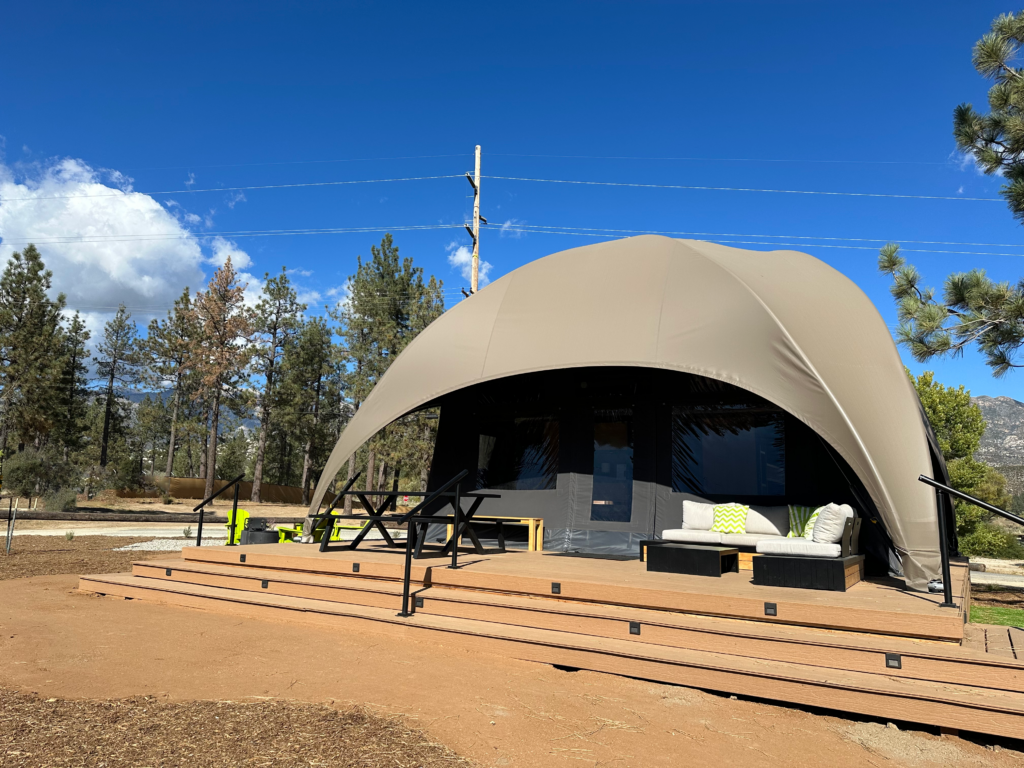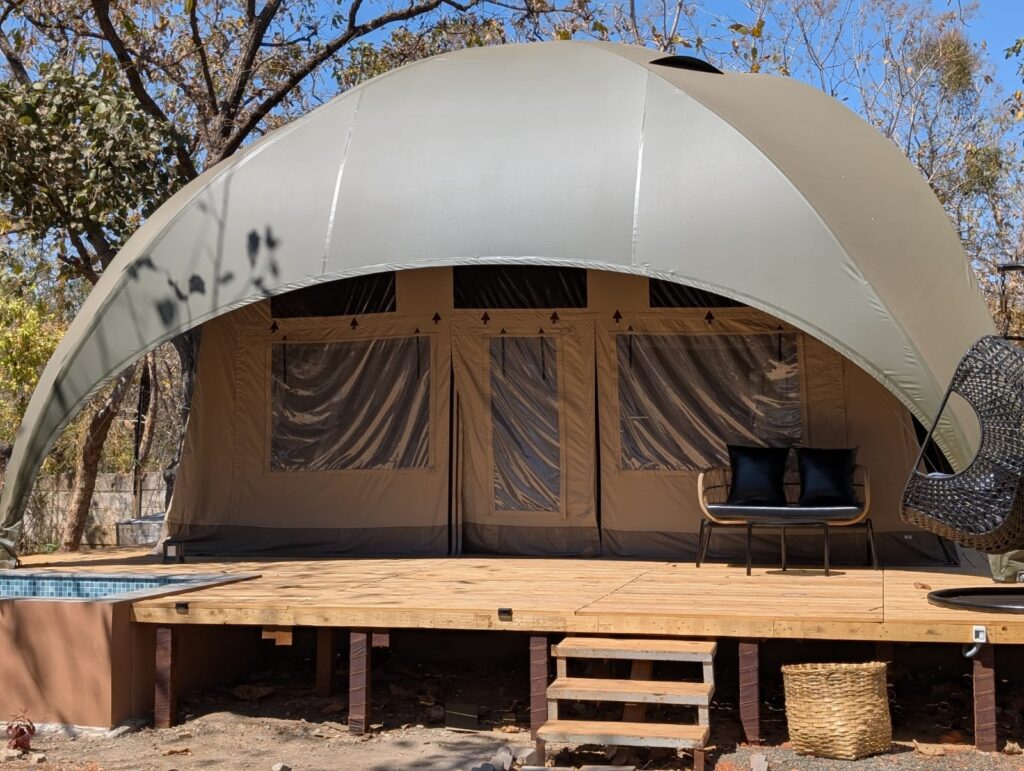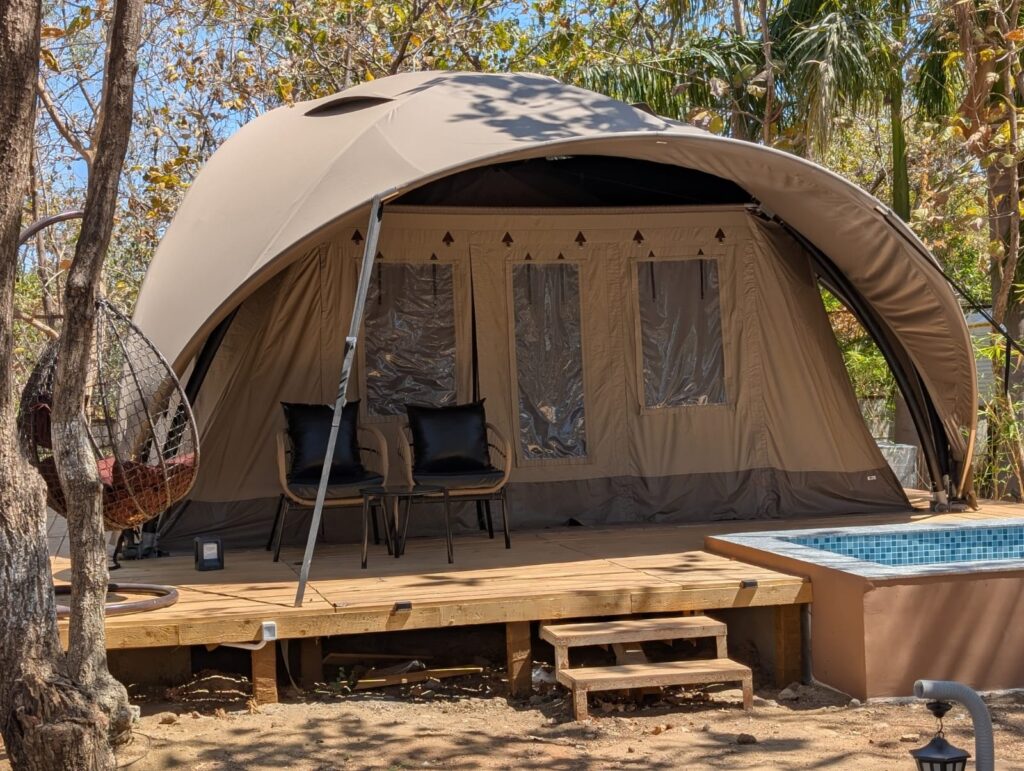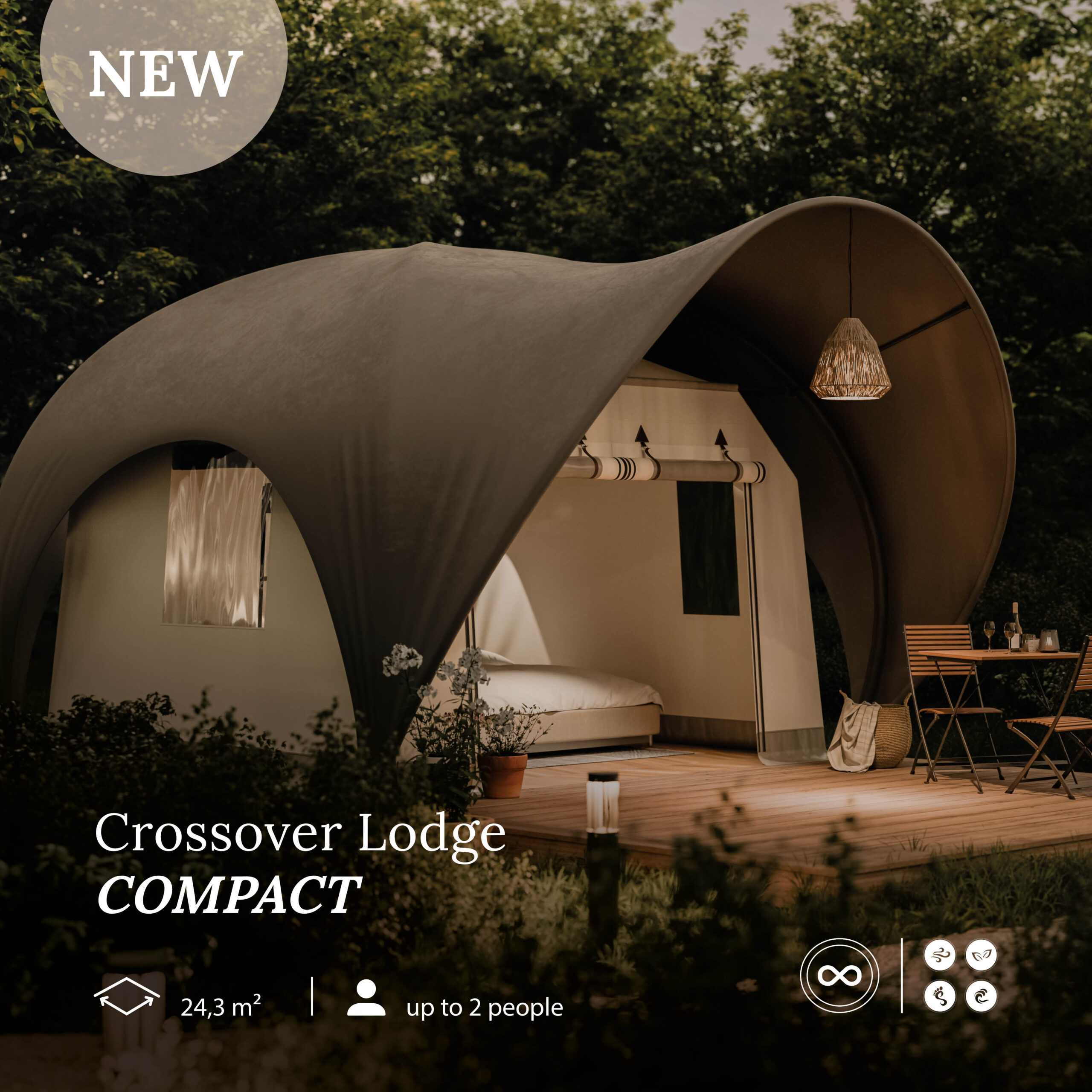The growth of the glamping market
The glamping industry is on fire—and it’s only getting hotter. According to Future Market Insights, the global glamping market is expected to grow from $12.4 billion in 2024 to over $39.9 billion by 2034, with a steady CAGR of 11.9%. Travelers are craving outdoor escapes with a splash of luxury—and glamping delivers.
If you’re wondering “Do I need a permit for a glamping site?”, you’re not alone. Many new site owners face this question. In this article, we’ll guide you through the legal side of glamping—what permits are required, what to expect in different countries, and where glamping is taking off.
Where is glamping the most popular?
Europe
- France – Especially popular in Provence, Dordogne, and the Alps. With its camping heritage, glamping is a natural fit.
- スペイン – Regions like Andalusia and Catalonia are glamping magnets thanks to the weather, tourist appeal, and low setup costs.
- Netherlands – From Veluwe to Friesland, Dutch nature is perfect for cozy luxury tents.
- United Kingdom – One of Europe’s top players, with stylish countryside escapes and yurts galore.
Crossover Lodge Large at countryside UK
North America
- United States – Massive growth in national parks like Yellowstone and Yosemite. Luxury brands like Under Canvas and AutoCamp are setting the tone.
- Canada – British Columbia, Alberta, and Vancouver Island lead the charge with forest and mountain glamping.
Africa
- South Africa – Safari glamps in Kruger and other national parks are booming.
- Tanzania & Kenya – Iconic luxury camping in Serengeti and Masai Mara.
- Namibia – Desert and coastal glamping offer ultimate tranquility.
Asia
- インド – The fastest-growing glamping market, with a 20.7% growth rate predicted.
- China – Also expanding fast, with an 18.6% CAGR through 2034.
- Japan – Known for its sleek and scenic sites near Mount Fuji or in the forested mountains.
- Vietnam – Glamping thrives in northern areas like Sapa and Ha Giang.
Oceania
- Australia & New Zealand – A nature-loving culture makes glamping a natural success.
- Fiji & Pacific Islands – Tropical, luxury glamping destinations for honeymoons and wellness escapes.
Benelux
- Netherlands & Belgium – Treehouses in the Ardennes or safari tents in Gelderland? Glamping is growing fast locally.
More market trends and insights can be found in the full Future Market Insights report.
Starting a glamping business: the permissions and the legal side
So, how do you get a permit for glamping? That depends on where you are—but in most cases, yes, you do need planning permission for a glamping site.
Setting up your site might involve:
- Zoning & Land Use Approval
- Building Permits for platforms, bathrooms, or semi-permanent structures
- Environmental Checks, especially near water or protected land
- Health & Fire Safety Regulations
- Tourism or Business Licensing
- Tax Registration
- Insurance, like public liability and property coverage
If you’re just getting started, check out our step-by-step blog on how to set up a glamping business.
Permissions by country
🇺🇸 United States
Starting a glamping business in the U.S. means tackling zoning laws first. You’ll need to:
- Confirm that your land is zoned for tourism
- Apply for building permits
- Possibly complete an environmental impact study
- Obtain a business license and register for sales tax
- Pass health and fire inspections if you offer food or shared facilities
Source: Glampitect USA
🇨🇦 Canada
In Canada, regulations vary by province, but the basics are:
- Zoning and land use permits via your municipality
- Building and safety inspections
- Environmental approval if near sensitive areas
- Tax and business registration, which you can check via BizPaL
Source: Northern Glamping
🇨🇳 China
In China, you’ll need:
- A Business License from the local Market Regulation Office
- Land use permits and zoning compliance
- Environmental approvals and fire inspections
- Possibly tourism licenses for lodging or dining
🇬🇧 United Kingdom
In the UK, the following apply:
- Planning permission is essential if operating more than 28 days a year
- Camping or Caravan Site Licence required depending on setup
- Permissions for utilities and fire safety
- Tax registration and liability insurance
Source: Canopy & Stars
🇪🇸 Spain
Spain’s system is regional, but key steps include:- Check if your land is suelo rústico (rural land) and apply for permission if needed
- Obtain a tourism accommodation license
- Fulfill environmental and health safety requirements
- Register for tax
Sources: My laweyer in Spain, Hospitalidad Natural
🇮🇳 India
India requires:
- Land Use Conversion from agricultural to commercial
- Business registration
- Possibly a No Objection Certificate (NOC)
- Environmental and fire clearances
- Health & sanitation permits for food/water facilities
Source: Indian Government Tourism Portal
🇳🇱 Netherlands
Glamping in the Netherlands? You’ll need:
- Land use plan check via Spatial Planning
- Apply for an Environmental Permit
- Possibly a Nature Permit near protected areas
- Health, fire safety, and public health inspections
- Chamber of Commerce registration and tourist tax collection
Source: Omgevingsloket
🇫🇷 France
In France:
- Register your business with the CFE
- Apply for a Permis d’Aménager if hosting more than 6 pitches or 20 guests
- Comply with the local PLU (urban plan)
- Set up insurance and health safety compliance
Conclusion
Now you’ve got the roadmap to start your own glamping business — from choosing the right spot and audience to building a future-proof retreat.
Glamping is more than just pitching a fancy tent. It’s about crafting experiences, connecting with nature, and creating a space people can’t wait to return to.
So, what’s your glamping dream? And when will you start building it?











